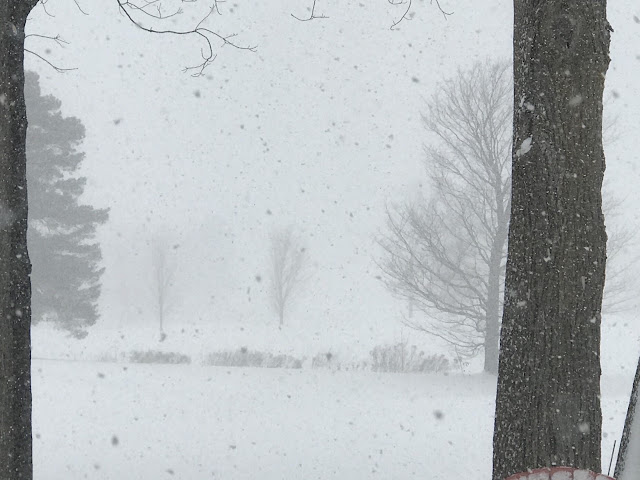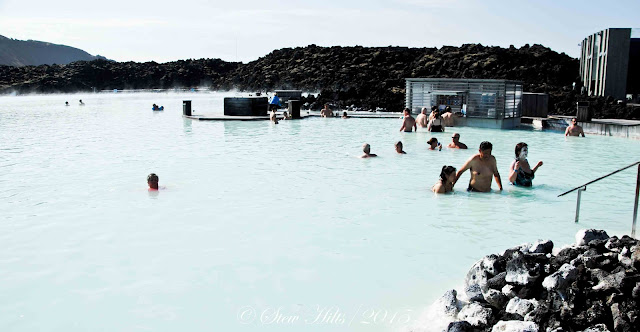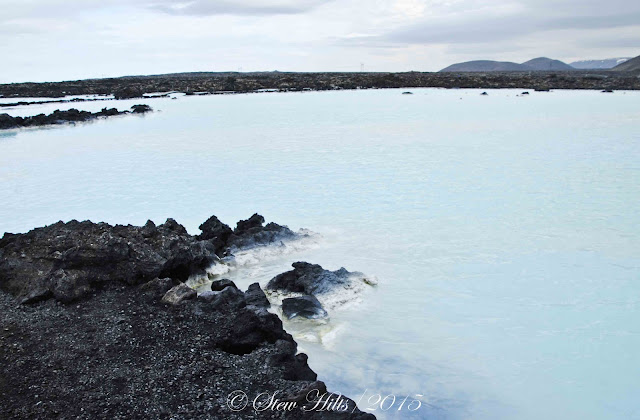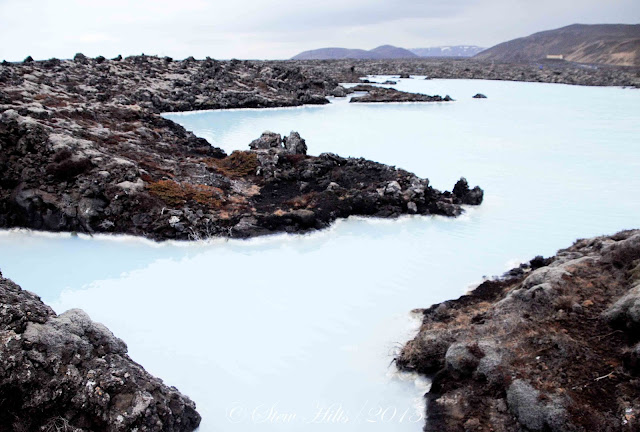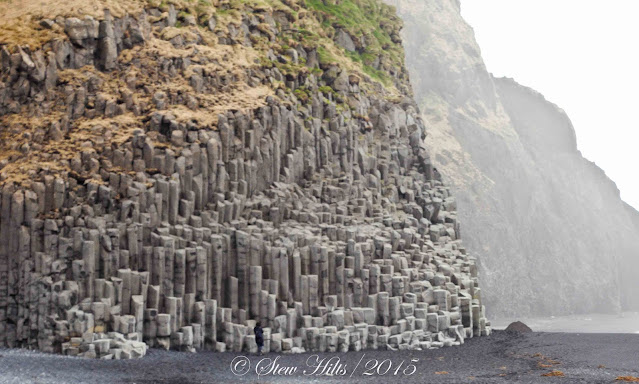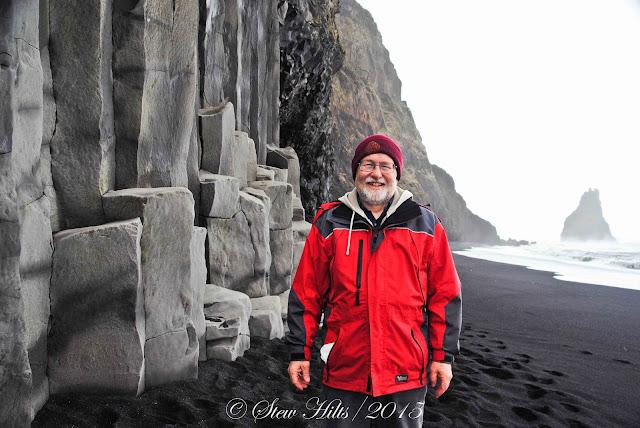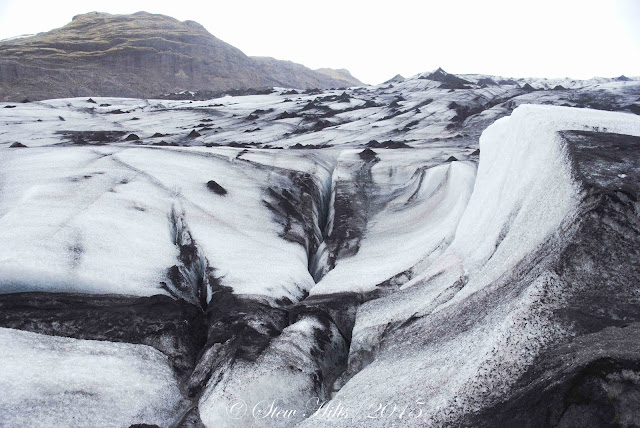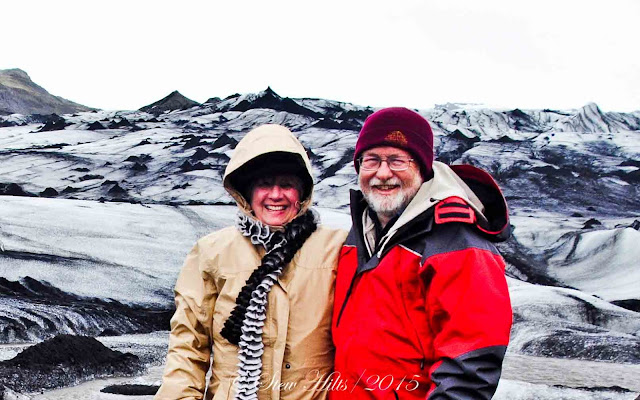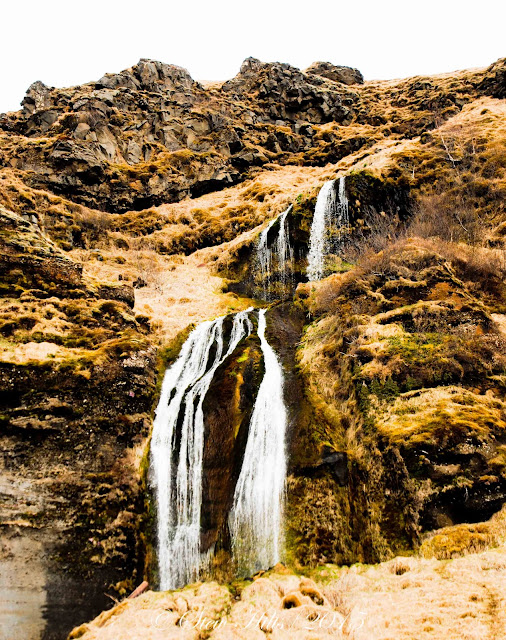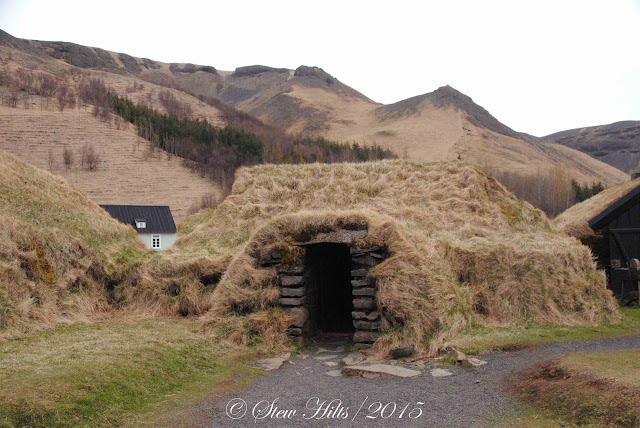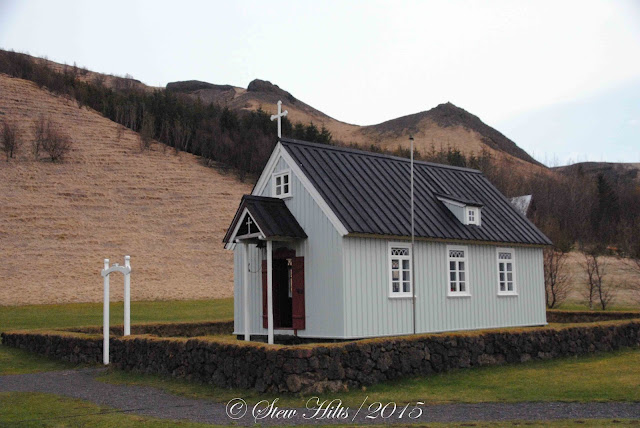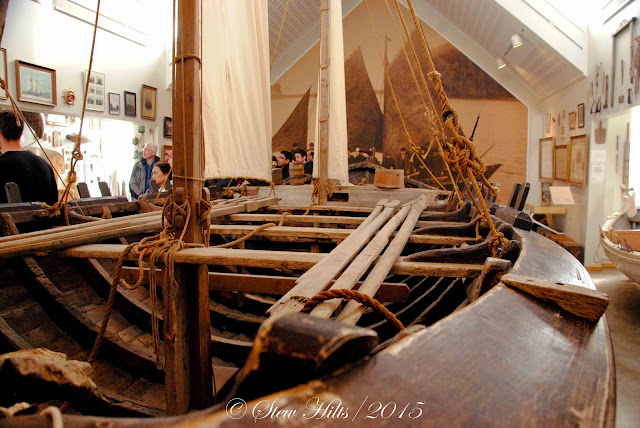The destination of our fourth day in Iceland was actually beyond the waterfalls and the museum to the south coast, about 2 hours from Reykjavik. It was both an interesting drive and a fascinating place. We ended up at the famous black sand beach known as Reynisfjara. And the sand was truly black, eroded from Iceland's volcanic rocks.
This is said to be the most beautiful black sand beach in the world. It was formed when hot lava from the nearby Katla volcano ran into the cold seawater and broke down so quickly it formed sand almost instantly (in geological terms). I think the 'most beautiful in the world' description may have been added in mid-summer when the sun was out, the waves were gentle, and the water was blue!
That certainly wasn't the case on the day we were there!
But this felt like a real adventure and we enjoyed all of it - the beach that Mrs. F.G. is walking along, the crashing waves, the cold howling wind off the north Atlantic and the offshore sea stacks. Almost as adventurous as being up on the glacier two days before! And close to going outdoors at this time of year here in Meaford!
The waves off the Atlantic were crashing! However, these waves can be deadly! Because of the underlying steep slope of the beach here, a much larger swell can approach without warning, and suddenly push much further up on the beach. Known by meteorologists as 'sneaker waves', these have caused several drownings here over the past 20 years, one just two months ago.
If you've ever been caught in an ocean swell, you'll understand. It's the backwash that's deadly, possibly carrying you away from shore. If you're wearing warm clothing and can't swim, you're in trouble immediately! This is particularly treacherous for tourists who approach the narrow bits of beach at the far ends, where there's not much space between the peaceful waterline and the cliffs. Just google Reynisfjara and you can find videos of large groups of tourists being knocked off their feet, and occasionally tourists being washed out some distance into the water.
Cliffs rise at either end of the beach, and the wild towering Reynisdrangar sea stacks (Reynir's Pillars of Rock) rise offshore, nesting place of thousands of birds like Puffins, Guillemots, Fulmars and Arctic Tern. We could barely see the stacks through the haze when we were there and certainly couldn't make out the seabirds!
Did I mention that Iceland has trolls as well as elves? There are two stories of how these rock pillars were formed, and both feature trolls. One version is that two trolls were trying to pull a large schooner onshore, but the sun rose before they finished and froze them to stone (trolls in Iceland are creatures of the dark). The other involves a man whose wife was murdered by two trolls. He went to find them and again sunrise came before they could get away so they were frozen into rock. Take your pick!
But in all of this it was the basaltic columns on the lower cliff at the end of the beach that intrigued me.
These rocks are cooled lava, 90% of which is composed of basalt. If it cools relatively rapidly (say over just a century), it undergoes columnar jointing forming these vertical columns.

Typically the lava forms geometric columns, hexagons, pentagons or octagons in cross-section. It's truly remarkable when you see them. We've also seen these in Fingal's Cave on the island of Staffa off the west coast of Scotland, and in Edinburgh on the lower cliffs of Arthur's Seat, a site known as Samson's Ribs. but perhaps the best known sites are the Giant's Causeway in Ireland and the Devil's Postpile in eastern California.
In places you could almost walk up the side of the cliff using the columns as stepping stones.
Can you see the little wheels in my brain turning under that hat? I've been skimming Instagram and thinking of all the adventures we've had, including this one. Once we've returned from Iceland I'll tell you about it.





